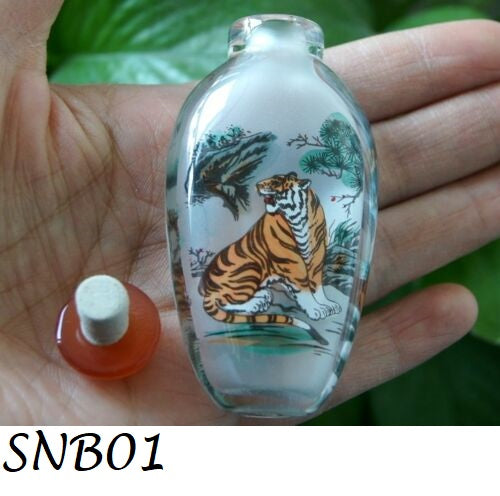1
/
of
8
cherrygemssg
Tiger Snuff Bottle
Tiger Snuff Bottle
Regular price
$70.00 SGD
Regular price
Sale price
$70.00 SGD
Unit price
/
per
Shipping calculated at checkout.
Couldn't load pickup availability
Snuff bottles are small, ornate containers used to hold and carry powdered tobacco known as snuff. The practice of taking snuff, a finely ground tobacco, was prevalent in many cultures around the world during the 18th and 19th centuries. However, snuff bottles are most closely associated with Chinese culture, where they reached the peak of popularity and became highly collectible works of art.
Characteristics:
Materials: Snuff bottles were crafted from a wide variety of materials, reflecting the artistic and creative prowess of the craftsmen. Common materials included glass, porcelain, jade, ivory, metal (like silver or copper), and various types of natural stones, such as agate, quartz, and coral.
Size and Shape: Snuff bottles are generally small, typically ranging from around 2 to 4 inches in height. They were designed to fit comfortably in the hand or a pocket. The bottles came in various shapes, including round, oval, rectangular, and more whimsical forms like fruits, animals, or mythological creatures.
Artistic Significance:
Snuff bottles were not merely functional containers but also works of art that showcased the craftsmanship and creativity of Chinese artisans. Skilled craftsmen employed various techniques like painting, carving, engraving, and overlay to adorn the bottles with intricate designs, scenes, calligraphy, and symbolic motifs. Some bottles featured auspicious symbols or references to Chinese folklore, making them valuable cultural artifacts.
Collectibility and Value:
The art of making snuff bottles flourished during the Qing Dynasty (1644-1912), and many of these pieces are highly sought after by collectors today. The value of snuff bottles is determined by factors such as material, craftsmanship, age, rarity, and historical significance.
Characteristics:
Materials: Snuff bottles were crafted from a wide variety of materials, reflecting the artistic and creative prowess of the craftsmen. Common materials included glass, porcelain, jade, ivory, metal (like silver or copper), and various types of natural stones, such as agate, quartz, and coral.
Size and Shape: Snuff bottles are generally small, typically ranging from around 2 to 4 inches in height. They were designed to fit comfortably in the hand or a pocket. The bottles came in various shapes, including round, oval, rectangular, and more whimsical forms like fruits, animals, or mythological creatures.
Artistic Significance:
Snuff bottles were not merely functional containers but also works of art that showcased the craftsmanship and creativity of Chinese artisans. Skilled craftsmen employed various techniques like painting, carving, engraving, and overlay to adorn the bottles with intricate designs, scenes, calligraphy, and symbolic motifs. Some bottles featured auspicious symbols or references to Chinese folklore, making them valuable cultural artifacts.
Collectibility and Value:
The art of making snuff bottles flourished during the Qing Dynasty (1644-1912), and many of these pieces are highly sought after by collectors today. The value of snuff bottles is determined by factors such as material, craftsmanship, age, rarity, and historical significance.
Share
















